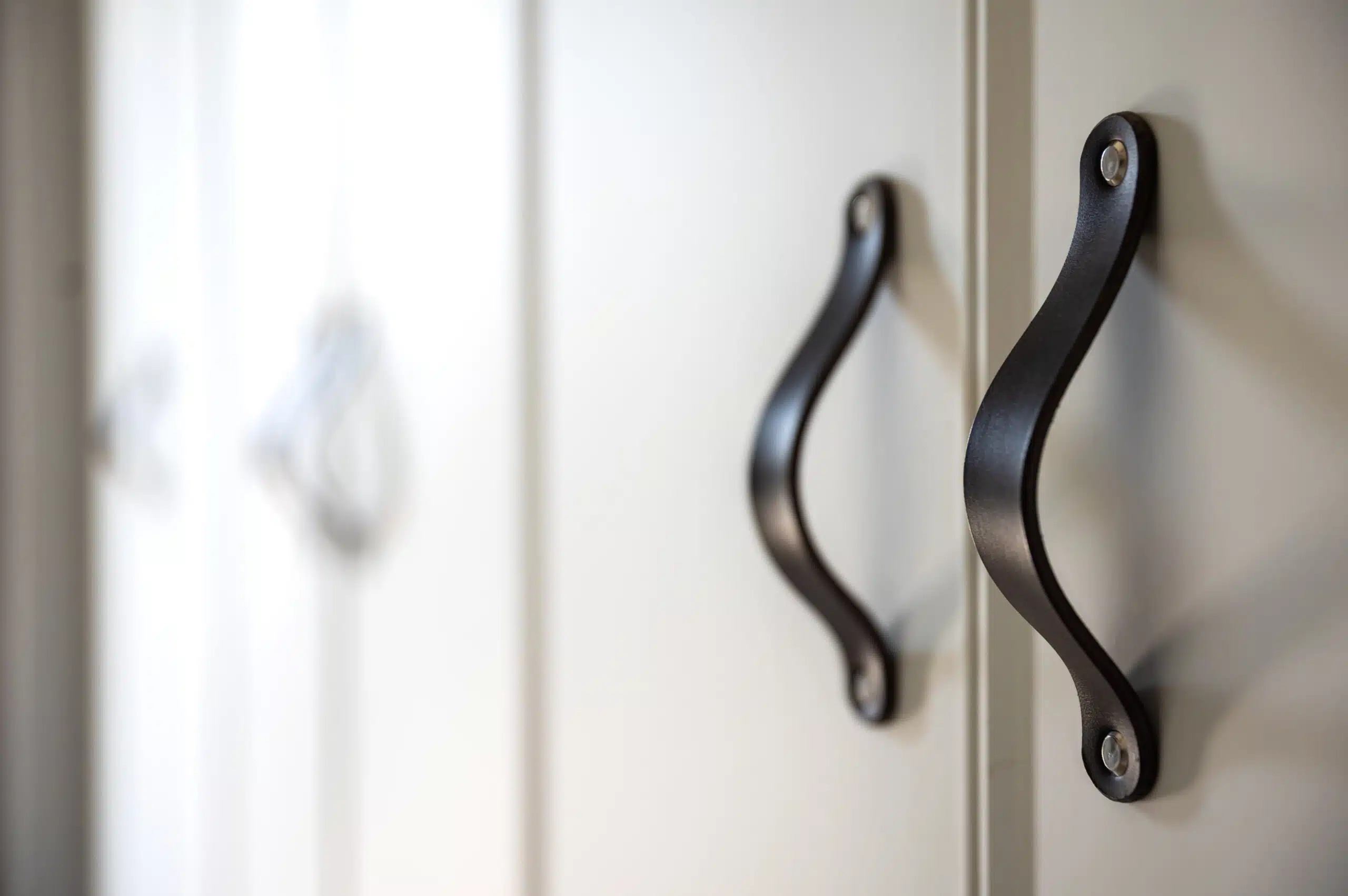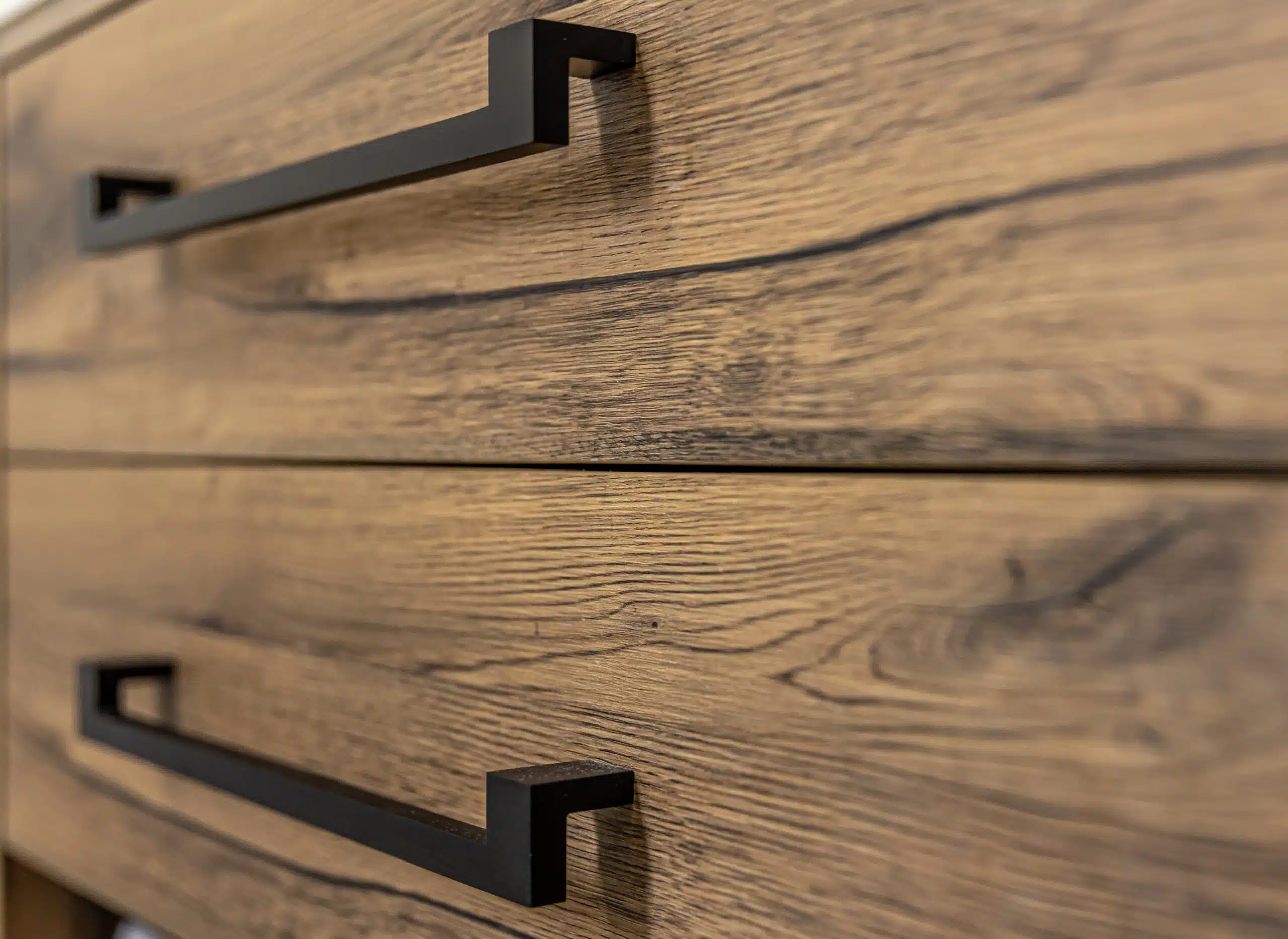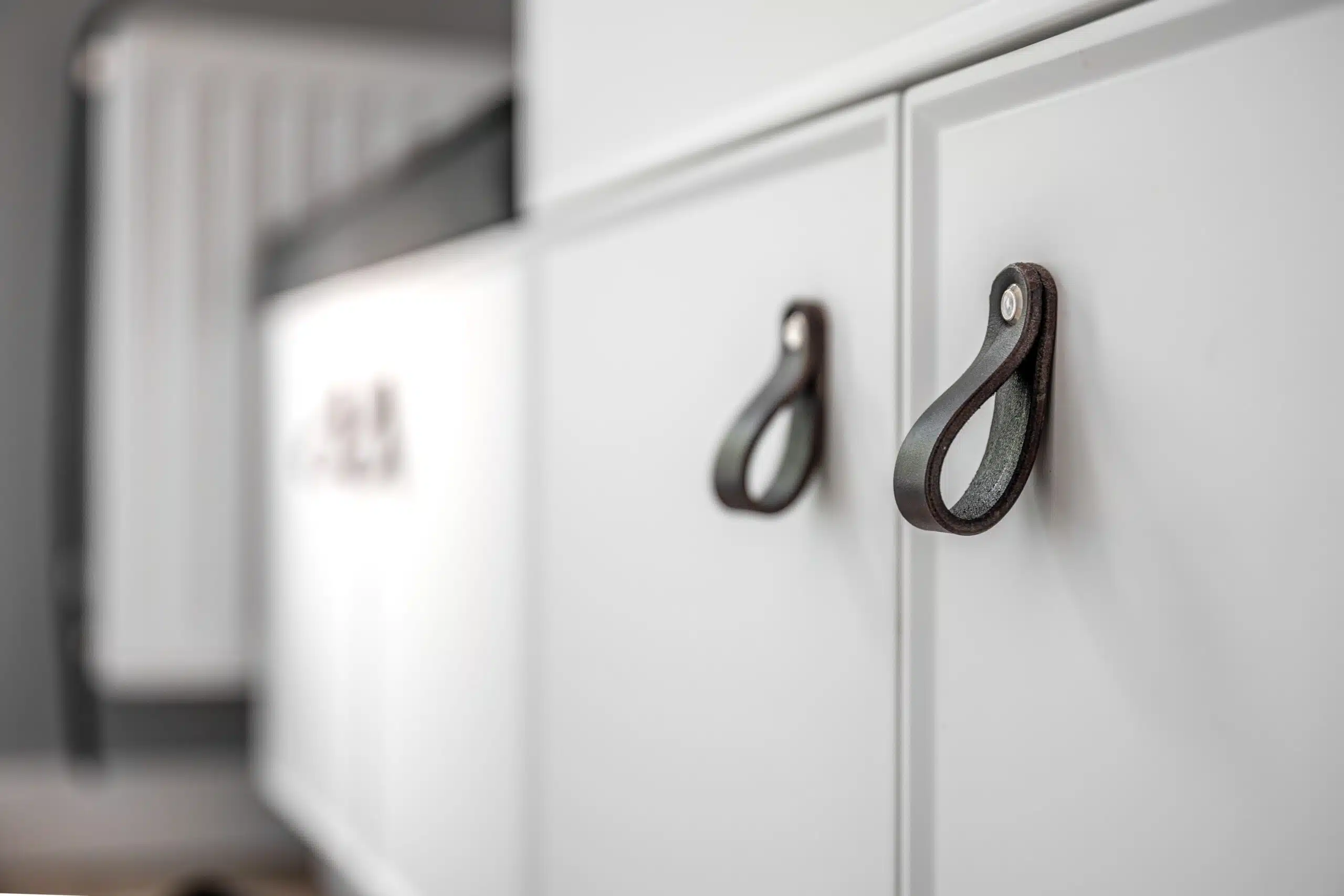
Kitchen cabinet knobs and pulls are high-touch areas that easily accumulate grease, food residue, and bacteria. Cleaning and maintaining them can be tricky, as using the wrong tools and solutions can lead to damage or tarnishing.
So, before you whip out your cleaning equipment, let American Wood Reface guide you through how to clean kitchen cabinet handles and prevent dirt buildup, as well as when to replace them.
The Importance of Regularly Cleaning Kitchen Cabinet Handles
Nothing is less appealing than grimy kitchen cabinet handles. Here are the top reasons you should clean them regularly.
- Sanitizing kitchen cabinet knobs and pulls makes your kitchen appear tidy and well-maintained.
- Grease-free handles make cabinets easy to use and operate.
- Removing grease from cabinet handles prevents germs from spreading, promoting a healthy kitchen environment.
- Clean cabinet hardware maintains its lifespan and pristine appearance.
Regular Cleaning vs. Deep Cleaning

Your kitchen cabinet handles require both regular cleaning and deep cleaning.
Regular cleaning involves frequent, light maintenance to keep handles free from everyday dirt and grime. Every week, spray a mixture of water and vinegar on the handles and wipe them dry with a microfiber or soft cloth. You should also do this as soon as you smudge or spill something on the handles.
In contrast, deep cleaning your kitchen handles is less frequent. It also involves more steps. You need to remove the knobs, soak them for 30 minutes in water mixed with vinegar or a mild dish soap, and rinse them. If you see grime in the crevices, you should scrub them with a soft brush. Deep cleaning restores the original shine of the handles and removes any hidden contaminants that might have accumulated over time.
How to Clean Kitchen Cabinet Handles According to the Material
To better guide you in cleaning your kitchen cabinet handles, we need to discuss the appropriate techniques based on their material. Let’s explore them one by one.
Wood
Wooden kitchen cabinet handles add a warm and timeless charm to any kitchen. Their rich textures and unique grain patterns provide a touch of elegance and sophistication.
To clean wooden handles, prepare a water–vinegar or water–soap solution. Spray a light amount of the mixture onto a soft cloth rather than directly onto the wooden handles. Gently, wipe down the handles.
To avoid damaging the wood, don’t spray too much cleaning mixture. Excess moisture can seep into the wood and cause it to swell or warp over time.
Metal
Metal handles are durable and visually striking. Their reflective surfaces can brighten your kitchen and add a sleek, modern touch.
The method and materials for cleaning metal handles vary depending on the type of metal.
| Brass | Wipe with a soft cloth dampened with a metal cleaner or a mixture of vinegar, salt, and flour. A lemon juice–flour paste also works. |
| Chrome | To clean, wipe with a soft cloth sprayed with vinegar. To remove rust, dip a piece of clean aluminum foil in water and use it to scrub away the surface rust. |
| Stainless Steel | Cleaning stainless steel cabinet handles requires wiping down with a soft cloth dampened with a water–soap solution. For rust, use a commercial cleaner or prepare a mixture of baking soda and water. Scrub rust and grime with a gentle brush. Do not use steel wool to avoid damaging the handle. |
| Silver | Wipe with a soft cloth dampened with a mixture of ammonia and water. To remove rust, soak the handles in vinegar and add baking soda. |
| Copper | Rub a slice of salted lemon onto the handle. You can also make a vinegar–salt solution and use a soft cloth to rub off grime and rust. |
Ceramic
The smooth surface of ceramic kitchen handles reflects light beautifully. With their intricate designs, ceramic handles can serve as eye-catching focal points that elevate the aesthetic of your cabinetry.
Cleaning ceramic handles is straightforward: use a soft cloth dampened with a mild soap and water solution and gently wipe the surface.
Glass
Glass kitchen cabinet handles have a clarity and shine that creates lightness in the kitchen. Additionally, they come in a variety of colors and shapes, providing versatile options to match your kitchen’s design elements.
To clean glass handles, you can use a commercial glass cleaner or a homemade solution of water and vinegar. Spray the cleaner or solution onto the handles; then, gently wipe the surface with a soft cloth. Consider using newspaper instead of a cloth to avoid streaking or leaving lint on the glass.
How to Prevent Dirt Buildup on Kitchen Cabinet Handles

Regular maintenance makes cleaning kitchen cabinet handles easy. A few steps can make a huge difference in preventing dirt buildup.
- Wipe down the handles right after cooking or eating.
- Deep clean once a month.
- Occasionally, oil wooden and metal handles for extra shine and protection.
When to Replace Kitchen Cabinet Handles Instead
Regular cleaning can significantly help your kitchen cabinet handles last longer. But even with the best care, there comes a time when cleaning just won’t bring them back to their peak condition. Over the years, handles can start to show signs of wear and tear, affecting both their appearance and performance.
Several signs indicate that it might be time to replace your handles. If they have stains that won’t budge no matter how much you clean, they can make your handles look permanently grimy or discolored. Also, if you notice a lot of rust on metal handles, that’s a big red flag. Rust can weaken the handles and even make them unsafe.
When choosing new handles, keep a few things in mind. First, make sure the style of the handles matches your kitchen’s overall aesthetic so that everything looks cohesive. Next, think about ergonomics—go for handles that feel good in your hands and are easy to use. Lastly, don’t forget to consider how you use your kitchen. Choose materials that can handle your daily kitchen activities and are resistant to moisture and heat.
Takeaway
Getting rid of grime and bacteria in every part of your kitchen, including cabinet handles, safeguards the well-being of everyone in your home. Follow our tips on how to clean kitchen cabinet handles to keep them looking and working at their best.
At American Wood Reface, we specialize in refacing kitchen cabinets using premium 1/4″ solid wood. Our refacing service doesn’t just update cabinet boxes and face frames; we also replace old or worn-out hardware with stylish new handles.
Ready to give your kitchen a fresh look? Book your free consultation today!
